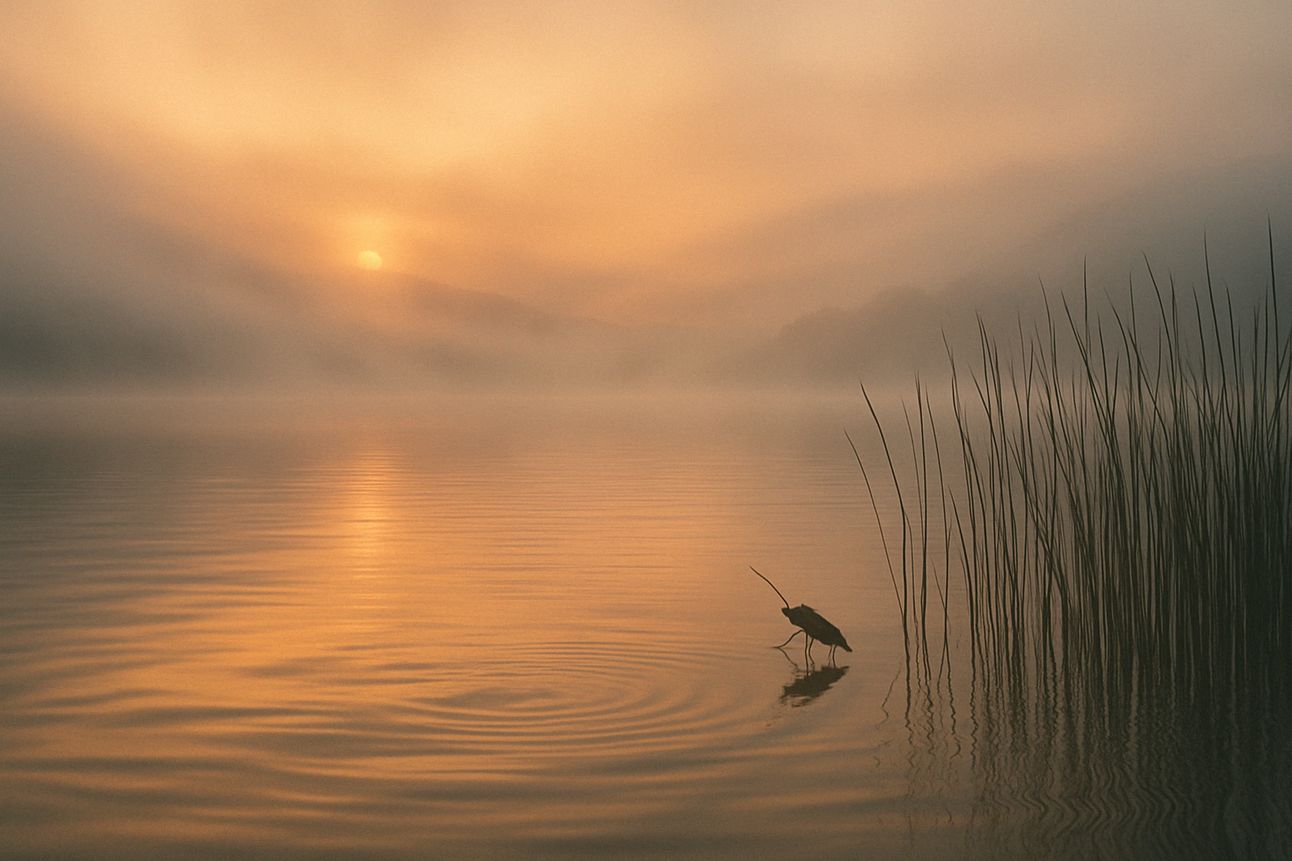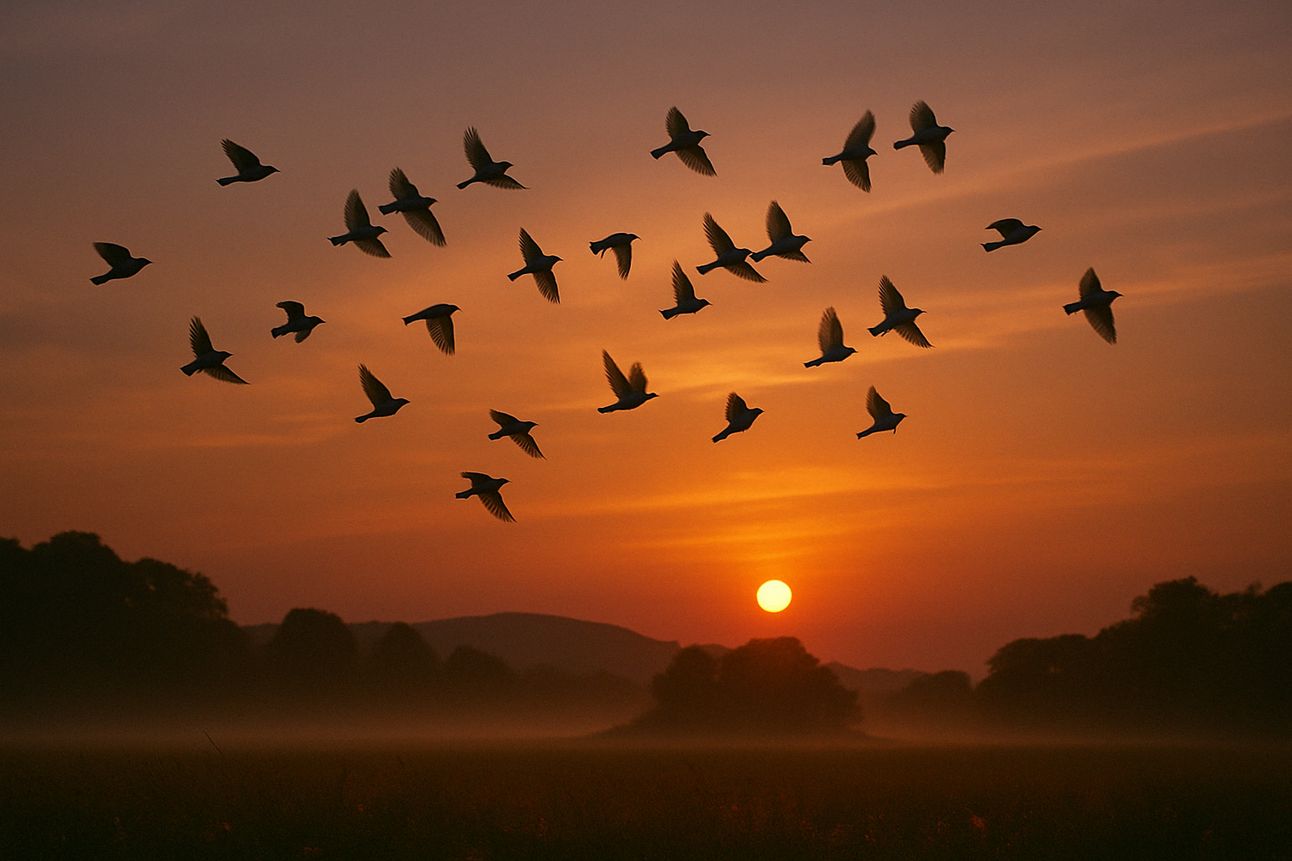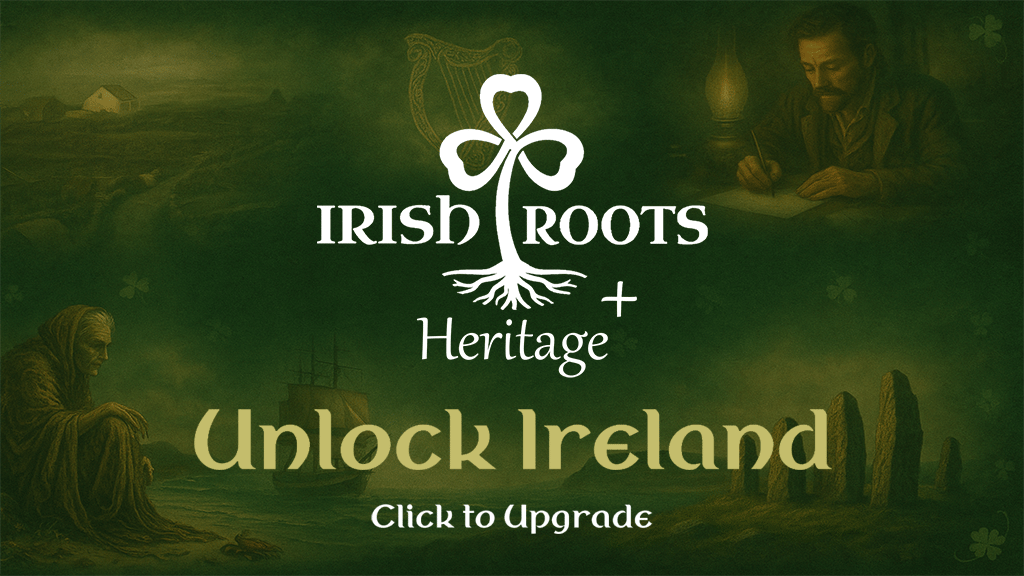- Irish Roots Heritage Plus
- Posts
- The Lake Isle of Innisfree: Peace comes dropping slow. Part 2
The Lake Isle of Innisfree: Peace comes dropping slow. Part 2
Here, time softens and motion quiets, peace is no longer a place to reach, but a way to live.

At the edge of Innisfree — a lone wader moves through morning stillness, where mist and light meet in slow rhythm.
And I shall have some peace there, for peace comes dropping slow,
Dropping from the veils of the morning to where the cricket sings;
There midnight’s all a glimmer, and noon a purple glow,
And evening full of the linnet’s wings.
Dear Reader,
Welcome back. In Part One, we followed Yeats’s vow to rise and go — to seek a life of rhythm, simplicity, and rootedness.
Now we step further into that vision.
Not where he will go — but how he will dwell.
In this stanza, time loosens. Movement slows. Peace is no longer a destination.
It becomes a way of inhabiting the world.
“And I shall have some peace there, for peace comes dropping slow”
This isn't ordinary peace. Not silence or escape. It’s peace as rhythm. A tempo. Something that arrives gradually — like mist, or breath. “Dropping slow” isn’t poetic flourish; it’s an embodied feeling. It settles. It seeps. It teaches the body to listen.
“Dropping from the veils of the morning to where the cricket sings”
The morning doesn’t rise in brightness. It falls in veils — soft, layered, slow to reveal. There’s no trumpet of dawn. Only tenderness. And at the bottom of that softness — a cricket, barely audible. A creature only heard when we’re quiet enough to deserve it.
Have you ever felt time slow like that — so gently you almost missed it?
“There midnight’s all a glimmer, and noon a purple glow”
Yeats shifts us into timelessness. Midnight doesn’t darken — it glimmers. Noon doesn’t blaze — it glows purple. These are not just visual effects. They undo modern time: no clock hands, no deadlines. Just cyclical pulse — light that arrives as presence, not progress.
Yeats believed in circular time — rooted in Irish seasonal rhythms and mystical return. This is time you feel rather than measure. The poem doesn’t tell time. It dwells in it.

A golden hush settles over the meadow at first light, where bees hum through misty air and the veil of morning reveals a world moving slowly, softly — just as Yeats imagined.
“And evening full of the linnet’s wings.”
Evening doesn’t close the day. It opens something else — flight, sound, presence. The linnets don’t just fly overhead. They fill the space with motion. With song. With life.
This isn’t isolation. It’s participation. Yeats doesn’t master the scene. He yields to it.
The landscape isn’t background — it’s his teacher.
🌿 Time as Rhythm, Not Rule
This stanza offers more than peace. It offers a different kind of time.
An Irish kind of time — measured not by minutes, but by mist and wings.
Time that moves with the land, not over it.
Yeats shows us the difference between passing through time and dwelling in it.
He asks us to let light arrive. To notice when it shifts. To be still enough that even a cricket becomes a companion.
This isn’t romantic escapism. It’s a cultural rhythm, remembered through poetry.
In Innisfree, Yeats doesn’t just imagine how to live.
He remembers how to belong.

Enjoy a 1-month free trial - explore everything with no commitment, cancel anytime.
Over 75,000 people already follow us for Irish stories on social media —
but this is where the deeper reflections live.
Irish Roots Heritage Plus offers slower stories, richer insight, and a quiet space away from the scroll.
“It feels like a retreat in my inbox — I slow down the moment I start reading.” — J. Donnelly (subscriber)
🔁 Continue Reading: “I hear it in the deep heart’s core”
In the final part of our journey, Yeats returns to the city — but the lake remains with him.
We’ll explore how memory lingers, and how the sounds and rhythms we carry shape us, even far from home.
Until then — what in this stanza did you feel, not just understand?
May it find a place in your own rhythm, too.
Reply